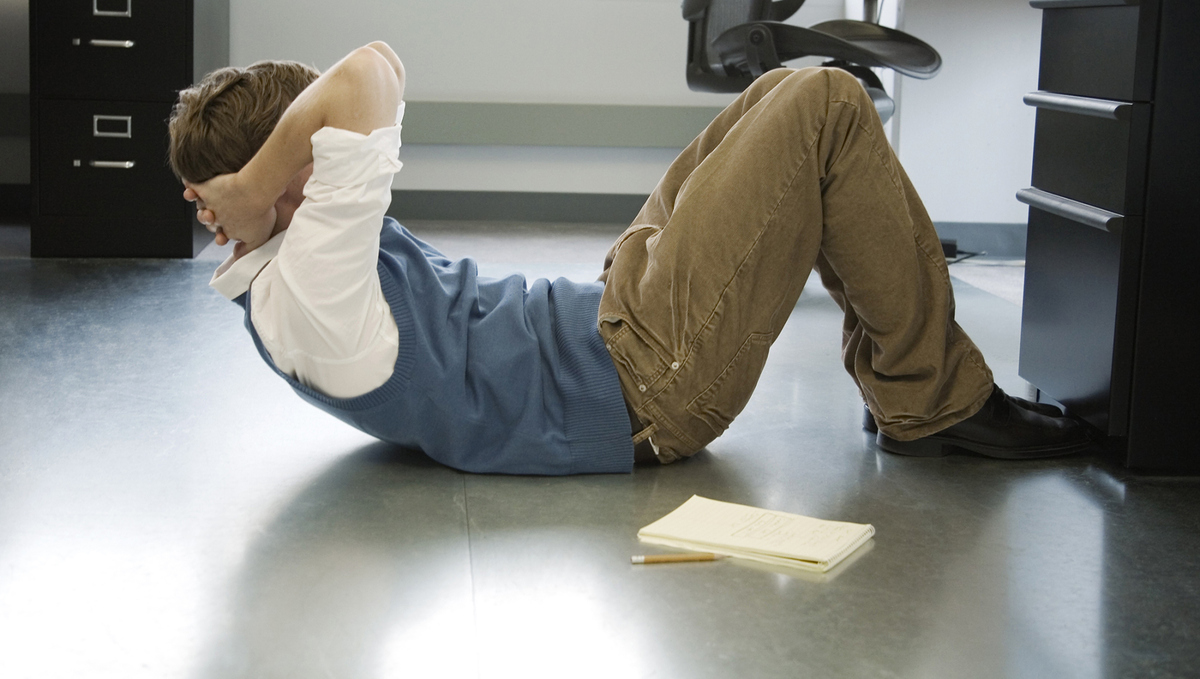
Historical buildings can be inspiring, but they don’t always reflect the demands of modern workplaces. “We had a beautiful antique building,” said Brian Todd, the public information officer for the Nashville Metro Public Health Department, of the city’s Lentz Public Health Center. “But it got to a point where we really didn’t need bomb shelter.” What the office did need? Spaces that encouraged walking, climbing, and convening in groups, without making it feel forced.
Active design, the latest trend in office planning, uses workspaces to nudge workers into making healthier choices. That means bathrooms that may feel unduly far from one’s desk, or a staircase that’s easier to access than the escalator. Companies have increasingly enrolled their employees in voluntary, and not-so-voluntary, initiatives to promote good health and fitness, but active design requires no buy-in. It’s invisible, which eliminates a lot of the pitfalls of employee-sponsored wellness programs. “When they’re mishandled, wellness programs become platforms for shame, embarrassment, and disappointment,” said Danna Korn, chief executive officer of the Sonic Boom Wellness program.
Offices that haven’t had recent updates struggle to attract and retain employees, said Jonathan Webb, vice president of workplace strategy at KI, a furniture manufacturing firm. Webb reminds clients of that when they’re resistant to spending the money to redesign their workspace. “When companies ask us the cost of doing this type of thing, I’ll say, well, how much does it cost to replace a good employee?”
Kitting an office out for active design means subtly making it a pleasurable experience to take the stairs, as the Nashville public health center did when it opened its new location in 2014. The building’s staircase is a centerpiece as visitors enter the office, and it’s easier to access than the elevators, said Todd. “It’s got colorful murals that change as you walk up, and natural light. We wanted to make taking the stairs something you’d want to experience.” The California Department of Transportation’s Los Angeles office in 2004 also designed a solution that made stairs the simplest way to travel: Its elevators stop only every third floor.
Active design is seen as a way to painlessly introduce healthier choices. But not every fitness-hacked office setup is beloved by employees. Take the open office plan, a popular example of active design. “The No. 1 criticism of open offices is noise,” said Stacey Olson, an associate at global design firm Gensler. “People think that an open office plan will automatically generate activity, but workers are still static at their desks, and worse, they say they can’t concentrate.” A 2005 study by the American Society of Interior Designers reported that there was a 300 percent increase in perceived worker satisfaction when offices reduced the amount of conversational noise.
“There was concern about the open office plan, since about 80 percent of our [former] building was closed office spaces,” Todd said of the Nashville rebuild. Employees complained that they would have nowhere to have private conversations in person or over the phone. “It’s harder to make that leap when you’re accustomed to having your own office for 30 years,” he said. “Everyone has a certain way they’re used to working, and removing hard walls can threaten that environment.”
“Designing an open office plan is definitely an art,” said Olson. Even though research shows a link between active workplaces and health and productivity, “at the end of the day, if you can’t focus, you can’t get anything done.”
From: Bloomberg
